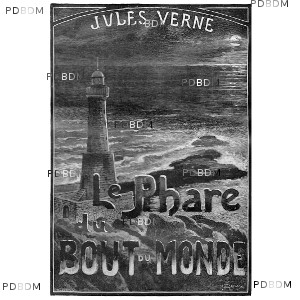The lighthouse of 1884
The colonization of the south of the territory.
On June 28 1881, the National Executive power of Argentina impersonated by general Roca decides to claim sovereignty over Staten island.
On October 24, 1883 general Rocar constitutes the Expeditionary Division of the Atlantic under the command of Commodore Augusto Lasserre.
The division is made up of:
- the gunboat "Parana",
- the barge "Cabo de Hornos",
- the freighter "Villarino",
- the steamer "Commodoro Py"
- the two cutters "Patagonia" and "Santa Cruz".
The armada raised anchor in February 1884 and arrived in the bay of San Juan de Salvamento, an open bay on the extreme east side end of the island on the18th of April 1884.
This is when they started construction of a lighthouse, a sub-prefecture office and a prison.
The first lighthouse of Patagonia.
El Faro San Juan de Salvamento is the first lighthouse of Patagonia and in the greater Cape Horn area. It was officially inaugurated on 25 May 1884.
The lighthouse was built on a headland at a height of 70 meters, was visible in a sector of 93° and had a range of 14 to 15 nautical miles.
It is an octagonal wooden construction of only one level. Two of its faces, looking out over the sea, have windows covered by big crystals with 7 Belgian lamps behind. Every lamp is
filled daily with 1 kilo of rapeseed oil. Inside the building part of the space is used as a sleeping area with several bunks and another part is used for storage of food and tools.
In these waters troubled by strong currents along the deserted coasts, dozens of vessels had shipwrecked. The importance of the lighthouse is enormous, it greatly improves navigation for vessels crossing between the Atlantic and Pacific océans.
This "glimmer of civilization" was the inspiration for Jules Verne writing his book "The Lighthouse at the End of the World"
The rediscovering
It all starts with the reading of a book

Crewing on yachts participating in ocean races in the Northern hemisphere, André "Yul" Bronner spends his winter months on the boats of friends chartering in the Southern Seas around Ushuaïa.
On these boats one has a lot of leisure time and the board libraries are usually well provided. This was the case of Kotick, the sailing vessel on which Yul was in early 1993.
He discovers the book of Jules Verne "The Lighthouse at the End of the World". He reads is rapidly, the book is not very bulky. At the end of his reading Yul is wondering if the Lighthouse described in the book really exists, (there is no mention of it on the maps) or if it is a creation of the author. He discussed the issue was his friends the owners of the yacht ... and together they decide to extend their next trip in the southern seas and visits Staten Island to settle the issue once and for all.
By using the indications in the book of Jules Verne, quite a precise description of the island, although many places have been renamed, on April 1 1993 Yul discovers the remains of the lighthouse build by the Argentinians. A heap of weathered planks and rusty tin sheets whining in the wind and broken glass.
The story could have ended there if…
Several days later, this inhabitant of La Rochelle, taking advantage of the nice day, decides to investigate the centre of the island in a nice walk. He leaves the boat only for a couple of hours dressed in a jean and sneakers, a light jacket an apple and a box of survival matches. The last only because of the heavy insistance of Claudine, the wife of the captain.
Quickly the weather deteriorates with clouds descending nearly at sea level.
He gets lost. It snows.
After five days of wandering,miraculously he gets out alive.
He knows he will come back.